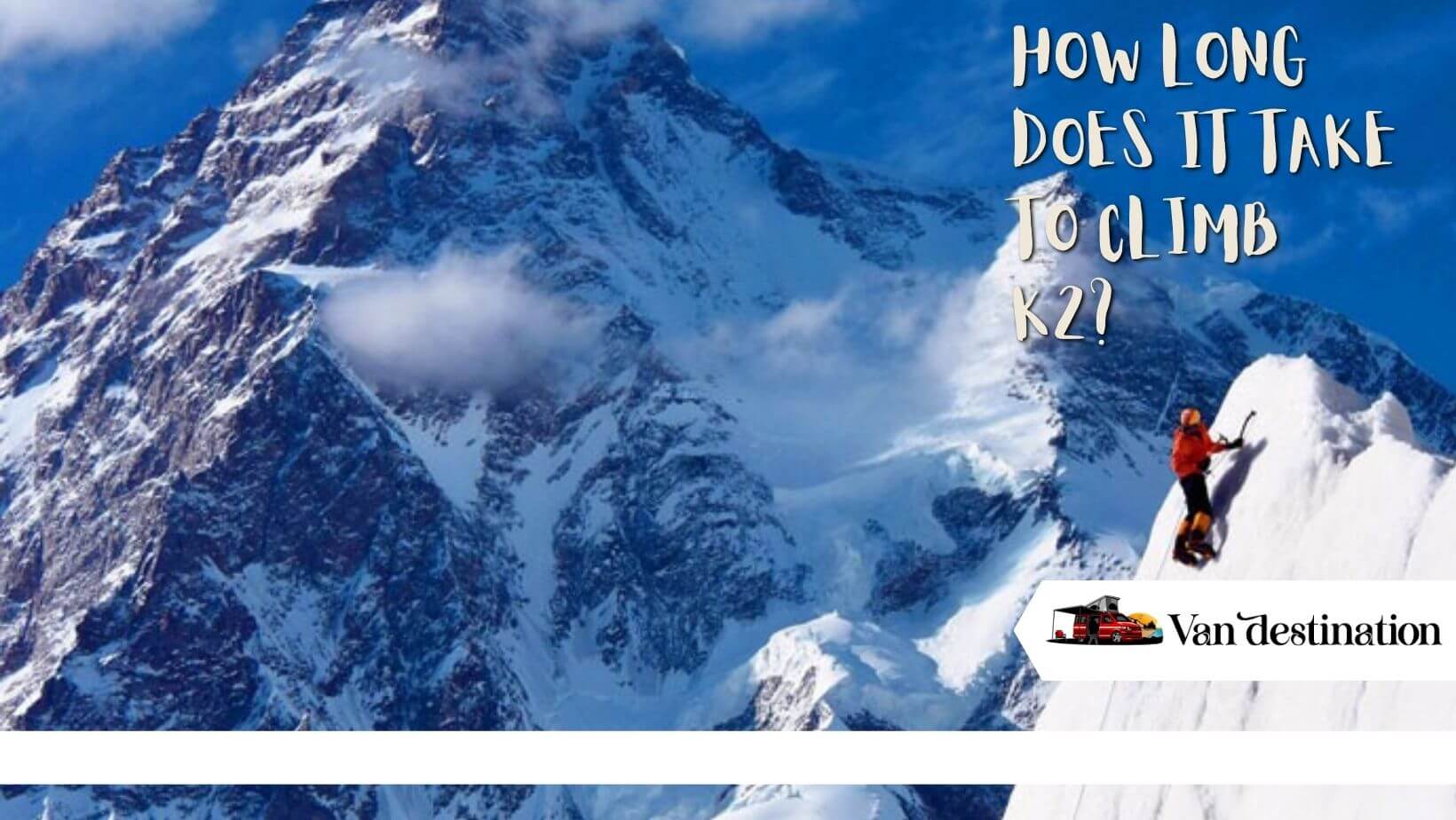How Long Does It Take To Climb K2?

K2 Known as the “Savage Mountain,” K2 is the second-highest mountain in the world, standing tall at 8,611 meters (28,251 feet). Located in the Karakoram range, on the border of China and Pakistan, climbing K2 offers much more challenging than Mount Everest.
Only the most experienced climbers dare to conquer this titan. What makes it so hard to climb? Is it the dizzying heights? The freezing temperatures? The thin air? Or the perilous ice walls? Yes, all of these and more.
Understanding the Climb
Climbing K2 is as much a physiological challenge as it is a physical one. As you ascend, the air gets thinner, reducing the amount of oxygen available. This can lead to altitude sickness, hypoxia, and even death.
K2 has rightly earned its nickname due to its harsh and unpredictable weather, steep and icy slopes, and high risk of avalanches. All these factors make the climb treacherous and life-threatening.
Also Read: How Long Does it Take To Hike Mount Washington
The Average Time to Climb K2
The Climbing Season
The climbing season for K2 is incredibly short, usually from June to August. This window provides the best chance for a successful climb.
The Acclimatization Process
Before the actual climb, climbers spend weeks at base camps to acclimatize their bodies to the reduced oxygen levels. This process can take anywhere between a few weeks to a month.
The Actual Climb
The actual ascent to the summit, from the last base camp, can take between 12-16 hours. Hence, from start to finish, a full expedition to K2 typically takes about 60 days.
Personal Stories For Climbing K2
Notable Successful Attempts
There have been several notable successful climbs, like the Italian expedition in 1954 led by Ardito Desio, or the historic ascent of the ‘Savage Mountain‘ by a Nepalese team in winter 2021.
Challenges Faced by Climbers
Despite their success, these climbers faced intense hardships, including freezing temperatures, brutal winds, and the constant threat of avalanches.
Preparation for Climbing K2
Training Required
Climbing K2 requires rigorous physical training to build strength and endurance. It also includes learning technical climbing skills and high-altitude survival techniques.
Equipment Needed
From crampons to harnesses, ice axes to ropes, and the right clothing to keep warm and dry, the equipment list for K2 is exhaustive.
Mental Preparation
Apart from physical readiness, climbers also need a strong mindset to deal with extreme conditions and potentially life-threatening situations.
The Risks Involved in Climbing K2
Weather Conditions
Sudden changes in weather can lead to deadly storms, making the climb even more dangerous.
Avalanches and Landslides
K2’s steep slopes and ice seracs make it highly susceptible to avalanches and landslides, adding another layer of risk to the climb.
Conclusion
To sum up, climbing K2 is a daunting task that demands extensive preparation, endurance, and grit. The average time to climb K2, from start to finish, is around 60 days, but it’s more than just a measure of time. It’s a test of human will against nature’s extreme forces.
Also Read: How Long Does it Take To Hike Mount Everest
FAQs
Why is K2 more difficult to climb than Everest?
K2 is steeper, has harsher weather conditions, and poses a higher risk of avalanches. It also has fewer routes to the top, which are more technically challenging.
How many people have climbed K2?
As of my knowledge cutoff in September 2021, less than 400 people have successfully reached K2’s summit.
What is the death rate on K2?
K2 has one of the highest fatality rates among the world’s highest peaks. About one person dies for every four who reach the summit.
Can you climb K2 without oxygen?
It’s possible but extremely dangerous. Only a few highly experienced climbers have accomplished this feat.
Has anyone climbed K2 in winter?
Yes, a team of Nepalese climbers made history by reaching the summit of K2 for the first time in winter in January 2021.



